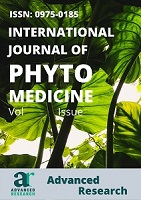Anti-herpetic activity evaluation of Salvia uliginosa exudate and Icetexone diterpene
Keywords:
Salvia; Cytotoxicity; AntiviralAbstract
Herpes Simplex Virus-2 (HSV-2) is a dermotropic virus. Recent studies indicate that the percentage of HSV-2 infections in Brazil is 11.3%, and it is estimated that approximately 90% of the world's population has a positive serology for one or both viruses. HSV-2 is a sexually transmitted infection that leads to serious problems in individuals with weakened immune systems or those undergoing immunosuppressive treatment. Furthermore, primo-infections or recurrent infections present a high risk of transmission from mother to child during delivery. Existing antiviral treatments are not effective during the latency phase, and some strains are already resistant to the primarily used drug acyclovir. Therapies using plant derivatives have proven effective in the treatment of herpes. Some species of Salvia have already been studied and have demonstrated efficacy against viruses and other microorganisms. Analyses published by our group have demonstrated that Salvia uliginosa exhibits significant activity against Leishmania amazonensis, an intracellular parasite responsible for causing leishmaniasis. Our objective was to evaluate and characterize the possible antiherpetic effects of S. uliginosa against HSV-2 in vitro. S. uliginosa was collected and identified by a botanist. The plant exudate and major compound, the diterpene Icetexone (ICT), were obtained from the Pharmacognosy Laboratory of the Federal University of Rio Grande do Sul. ICT was isolated in the same laboratory via column chromatography using silica gel. The MTT assay was used on the VERO cell line to analyze the cytotoxicity of the extracts and isolated compounds, determining the IC50 and CC50 values. A plaque assay was used to evaluate the virucidal effect of the plant exudate and ICT on HSV-2. These results indicated that the exudate of S. uliginosa has anti-herpetic activity, although ICT does not. Further experiments are required to elucidate the mechanism of action.References
Xu F, Schillinger JA, Sternberg MR, Johnson RE, Lee FK, Nahmias AJ, et al. Seroprevalence and co-infection with herpes simplex virus type 1 and type 2 in the United States, 1988–1994. J Infect Dis [Internet]. 2002 Apr 15 [cited 2021 Aug 25];185(8):1019–24. Available from: https://pubmed.ncbi.nlm.nih.gov/11930310/
Santos NS de O, Romanos MTV, Wigg MD. Virologia Humana terceira edição [Internet]. Vol. 3. 2015 [cited 2021 Aug 25]. 1308 p. Available from: https://www.saraiva.com.br/virologia-humana-3-ed-2015-8869993/p
Cagno V, Sgorbini B, Sanna C, Cagliero C, Ballero M, Civra A, et al. In vitro anti-herpes simplex virus-2 activity of Salvia desoleana Atzei & V. Picci essential oil. Schang LM, editor. PLoS ONE [Internet]. 2017 Feb 16 [cited 2021 Aug 25];12(2):e0172322. Available from: HYPERLINK "https://pubmed.ncbi.nlm.nih.gov/28207861/" https://pubmed.ncbi.nlm.nih.gov/28207861/
Yadavalli T, Ames J, Agelidis A, Suryawanshi R, Jaishankar D, Hopkins J, et al. Drug-encapsulated carbon (DECON): A novel platform for enhanced drug delivery. Sci Adv [Internet]. 2019 Aug 2 [cited 2021 Aug 25];5(8):eaax0780. Available from: HYPERLINK "https://advances.sciencemag.org/content/5/8/eaax0780" https://advances.sciencemag.org/content/5/8/eaax0780
Cezarotto CS, Dorneles A, Baldissera FG, da Silva MB, Markoski MM, Júnior LCR, et al. Leishmanicidal and anti-chemotactic activities of icetexanes from Salvia uliginosa Benth. Phytomedicine [Internet]. 2019 May 12 [cited 2021 Aug 25];58:152748. Available from: HYPERLINK "https://europepmc.org/article/med/31005722" https://europepmc.org/article/med/31005722
Silva AH. Estratégias Para Avaliação Da Toxicidade De Sistemas Nanoestruturados [Internet]. UFSC; 2011. Available from: https://repositorio.ufsc.br/handle/123456789/95628
Cezarotto C. Isolamento e atividade antiquimiotáxica in vitro de diterpenos de espécies de Salvia provenientes do sul do Brasil [Internet]. Vol. 1. UFRGS; 2018. Available from: HYPERLINK "https://lume.ufrgs.br/handle/10183/188739" https://lume.ufrgs.br/handle/10183/188739
Esquivel B, Burgueño-Tapia E, Bustos-Brito C, Pérez-Hernández N, Quijano L, Joseph-Nathan P. Absolute configuration of the diterpenoids Icetexone and conacytone from Salvia ballotaeflora. Chirality [internet]. 2018 Feb;30(2):177–88. Available from: https://onlinelibrary.wiley.com/doi/10.1002/chir.22781
Domínguez XA, González H, Aragón R, Gutiérrez, marroquín JS, Watson W. Mexican medicinal plants XXIX. Three new diterpene quinones from Salvia ballotaeflora. Planta Med. 1976;30(3):237–41.
Published
How to Cite
Issue
Section
License
Copyright (c) 2025 Maria, Alexia Grismino, Diogo Alves, Gilsane von Poser, Pedro Roosevelt Torres Romão, Luiz Carlos Rodrigues Junior

This work is licensed under a Creative Commons Attribution-NonCommercial-NoDerivatives 4.0 International License.


